Convenience retailing is unlike any other channel, because it is not defined by the products stocked or served but by a concept: Convenience. And because that concept is defined by customers, it’s always evolving.
So, what is convenience? Historically, it has been a mix of 24/7 operations, an accessible location, one-stop shopping and a fast experience. While all those elements still hold true today, there’s a one-word attribute that consumers today prize more than anything else: Easy.
Easy Does It
Historically, “easy” is part of some c-store brands.
Remember Nice N Easy Grocery Shoppes in central New York? The company was founded by the late John MacDougall in 1980. CST Brands Inc. acquired the chain in 2015. Several years later, Alimentation Couche-Tard purchased CST and rebranded the Nice N Easy locations to Circle K stores.
And then there’s the misspelling of the word easy, like E-Z Mart Stores, based in Texarkana, Texas. Founded by the late Jim Yates and his wife FaEllen in 1970, GPM Investments LLC acquired E-Z Mart’s 272 convenience stores in Texas, Oklahoma, Louisiana and Arkansas in 2018.
Selling a family business is anything but easy, but the idea of a quick and easy shopping trip encapsulates what consumers really crave. Customers want something quick and they want it now, wherever they are and at whatever time. But most of all, they want it all to be easy.
In our most recent consumer survey, we asked respondents to describe the words “convenience” and “convenient.” In both cases, the word “easy” dominated. The second-most common word, “something,” was often attached to “easy,” as in the longer statement “something easy.”
What comes to mind when you hear “convenience”?
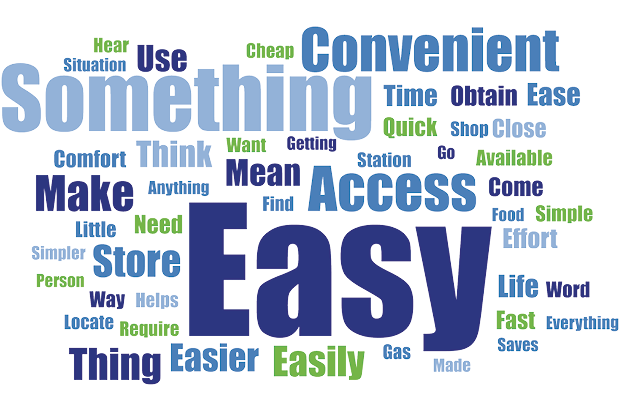
What comes to mind when you hear “convenient”?
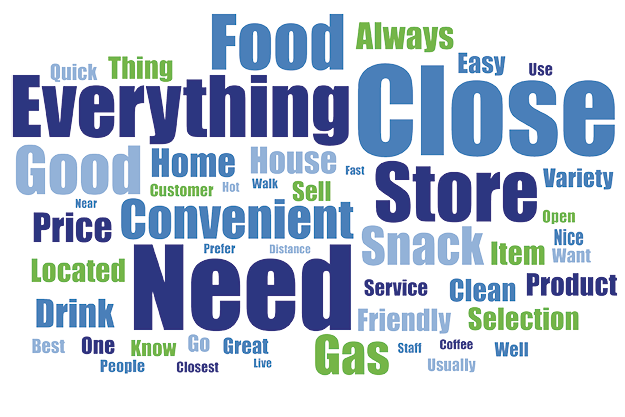
Consumers clearly define convenience (and convenient) as easy. But virtually all retail channels try to sell this idea of ease and convenience. After all, who would ever want to be thought of as an “inconvenience store”? Everyone celebrates convenience—even if they aren’t known for it.
What Is a Convenience Store?
So, if all retail stores aspire to be convenient stores, is there a difference between how consumers define convenient stores and convenience stores?
The official NACS definition of a c-store is simple: “A retail business that provides the public with a convenient location to quickly purchase a wide variety of consumable products and services, generally food and gasoline.”
That definition nicely fits the 152,000-plus convenience stores in the United States, but it could also describe many other different channels. Would drug stores, dollar stores or other channels be considered convenience stores? For many consumers, the answer is “yes.”
Customers agree that convenience means “easy,” but there is confusion over what exactly “convenience store” means. Most think that the competing channels fit the c-store mold.
We’ve established that consumers want something easy, so let’s dive deeper into to their wants and needs as they relate to store attributes and products.

What Convenience Stores Offer
Consumers are aligned on the convenience store offer: Snacks and drinks from a small-format store that has extended hours—and quick service.
However, there are some interesting variances. Consumers said that restrooms are more applicable than fueling (60% vs. 55%), which suggests that promoting the availability of restrooms—clean restrooms—could entice new consumers to your stores.
Meanwhile, foodservice, which has seen remarkable growth in our channel over the past two decades, is not seen as a core offer for everyone every time: “Sells freshly prepared foods” was considered “very relevant” by 31% of consumers, on par with “sells basic electronics like chargers” (32%). Promoting foodservice could provide a differentiating factor for consumers seeking convenience, since other similar channels are less likely to offer food prepared onsite.

Solve Customer Needs, Appeal to Value
Consumers overwhelmingly said that they have positive views of convenience stores. By a nearly 15:1 margin, they are more likely to say that they have a positive view—three in four consumers (74%)—towards c-stores than a negative view. And for those who have positive perceptions, what word do they closely associate with convenience stores? Of course, the word “easy” was a popular response—but another word popped even more: “need.”
Why do you have a positive view towards convenience stores? (Asked to the 74% who have a positive view.)
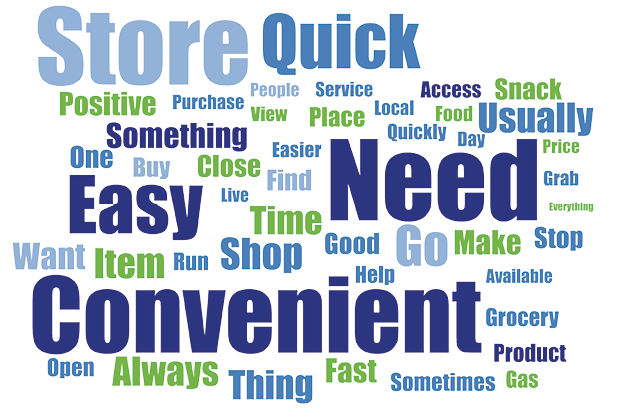
For the 5% of people who have negative views of convenience stores, their perceptions are tied to higher prices. Negative perceptions related to safety, cleanliness or the workforce were far less on the minds of these consumers.
Why do you have a negative view towards convenience stores? (Asked to the 5% who have a negative view.)
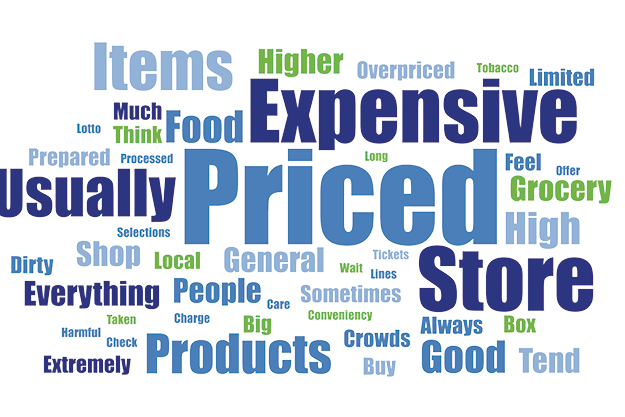
Proximity Is Important
We asked consumers to share the name of their favorite convenience store. Not surprisingly, some very well-known c-stores were cited. But not everyone named a c-store brand. Of the top 18 companies cited, three did not fit the definition of a c-store: Dollar General was named the favorite convenience store by 4% of consumers and 1% cited Family Dollar; another 2% cited Walmart.
Why consumers have a favorite store comes down to another key word: “close.” Proximity was the top reason cited, and that may explain why the non-convenience store names were cited. In many towns, dollar stores might be the closest viable option for shoppers, along with a large retail store like Walmart.
Why do you prefer a particular store?
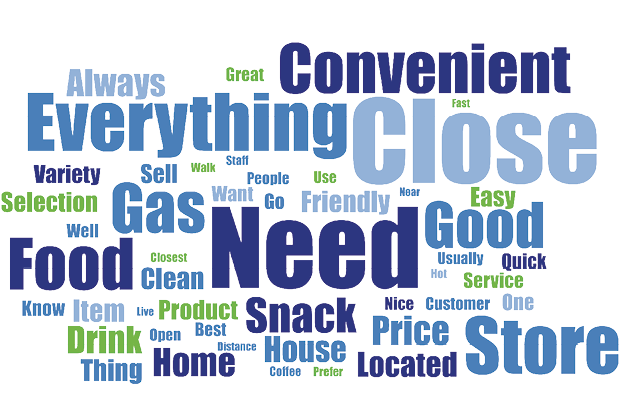
I Need Something Easy and Close
Because convenience is evolving, it's no longer the exclusive domain of convenience stores. The results from this survey show that consumers are not defining their shopping experiences by what the different retail channels offer, but by how a store meets a specific need. All brick-and-mortar retailers aim to be convenient—and that ever-present convenience offer is changing how younger consumers are defining retail channels.
Changing consumer perceptions may be a threat if c-stores aren’t the first—or even the second or third option—for customers looking for convenience. But there is opportunity for those who focus less on convenience by traditional definitions and more on the customer experience—especially if it’s easy.